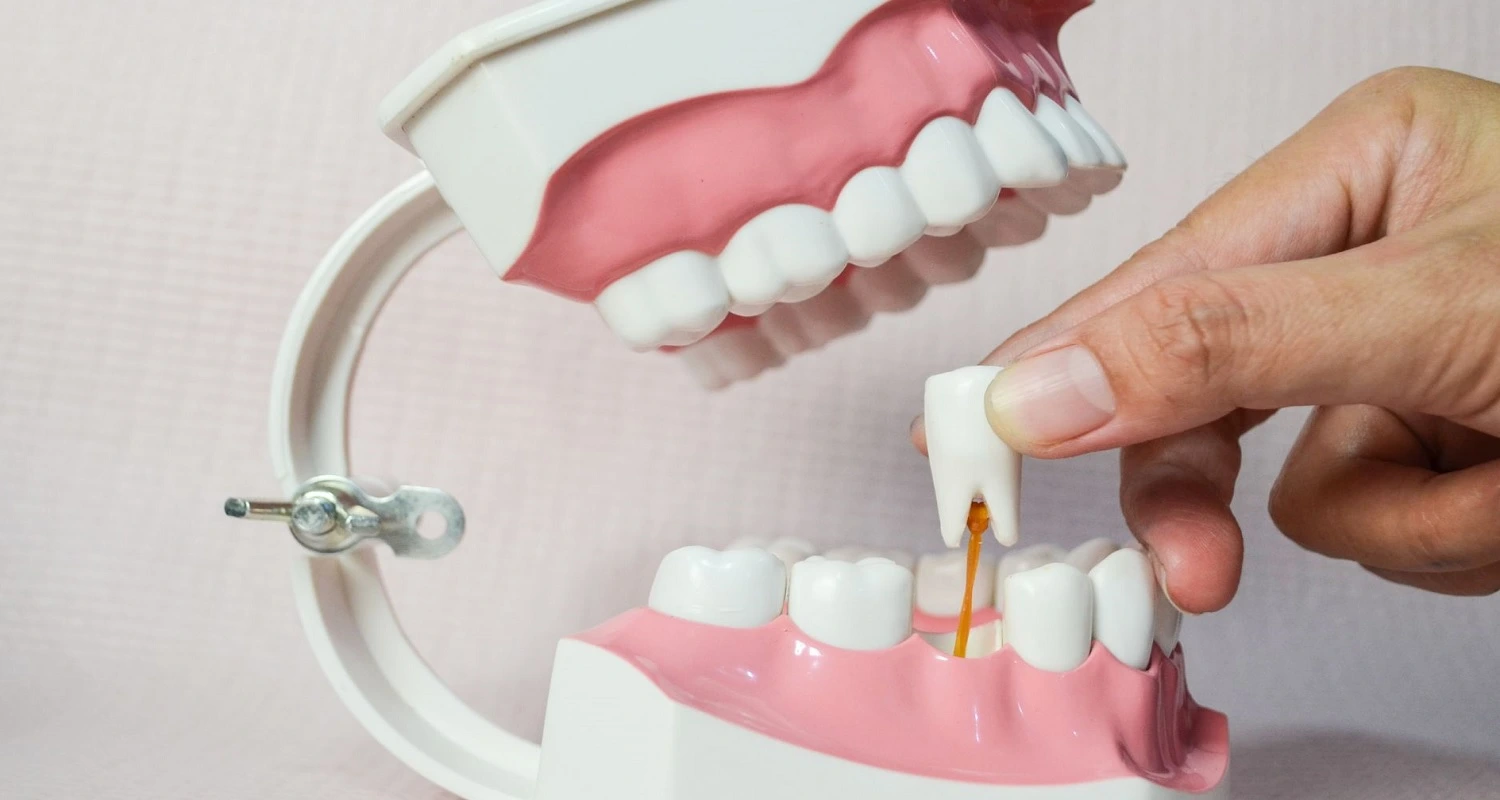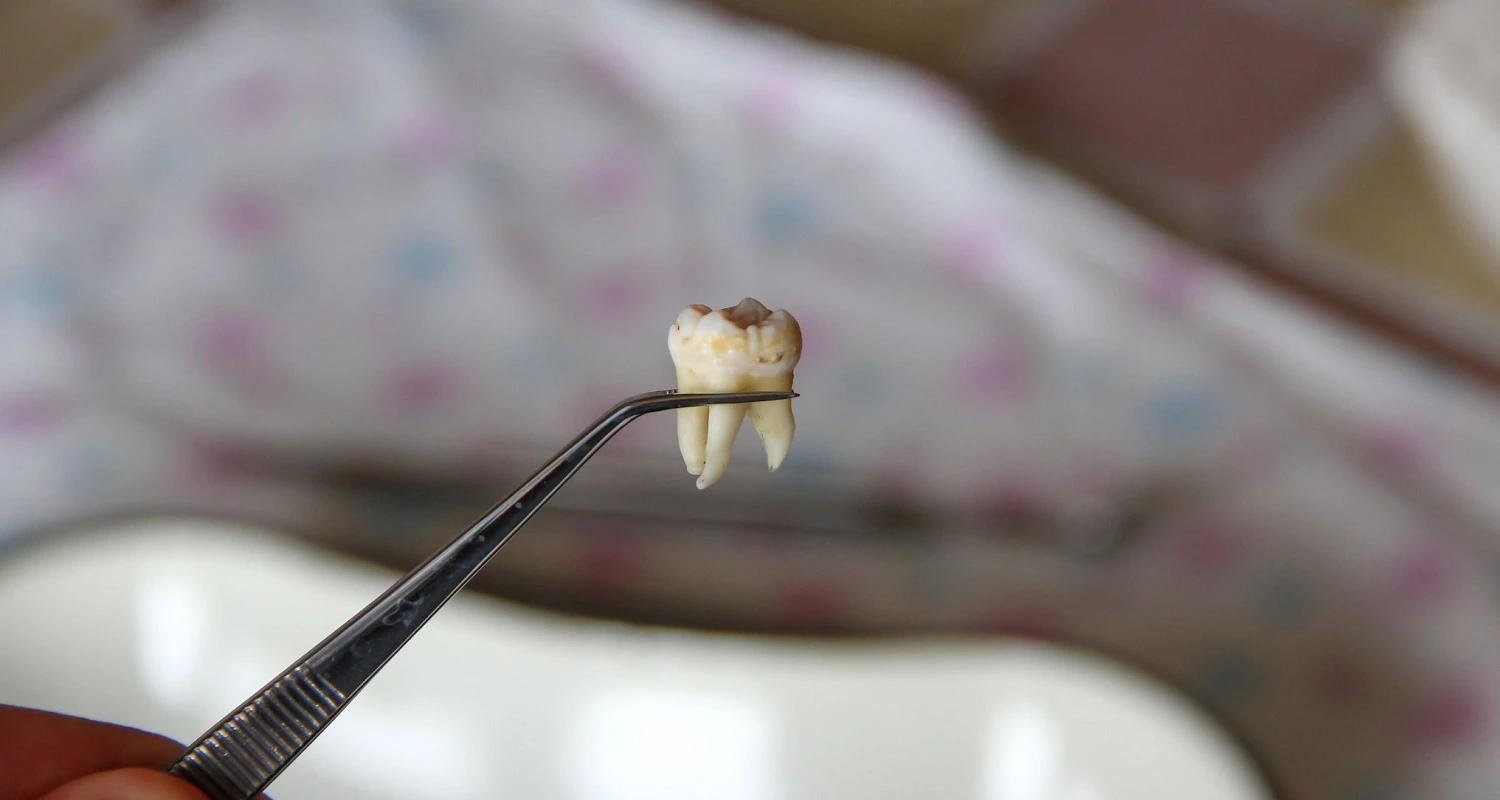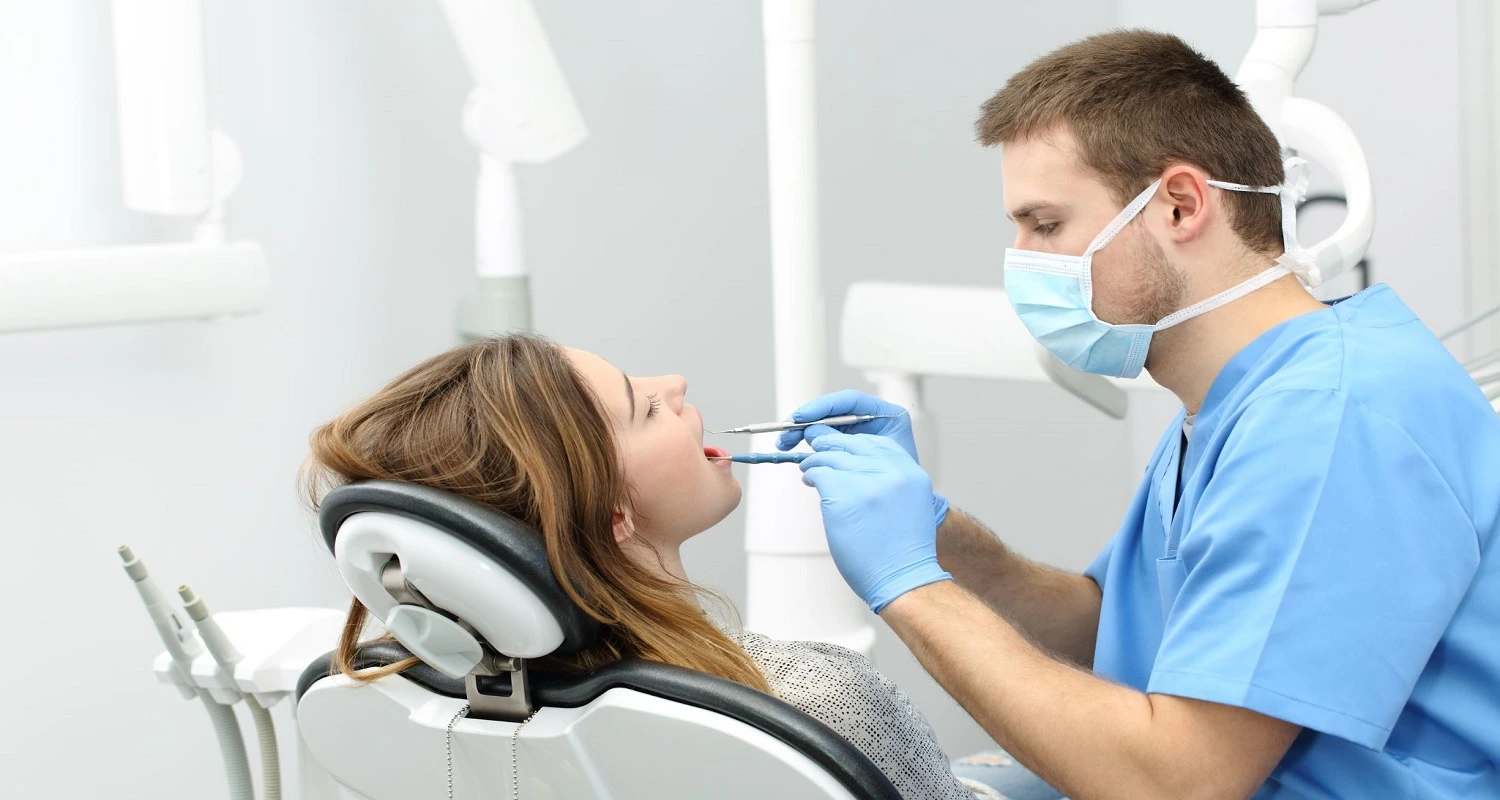Last Updated on: 10th December 2025, 07:30 am
Situations where the tooth extraction healing process becomes the optimal therapeutic choice. The primary goal of dentistry is to safeguard natural teeth using different therapeutic techniques. This leads to the natural process of tooth extraction healing.
Dental extraction, also known as exodontia, is the removal of a tooth from the socket that houses it (the gum), a surgical procedure that eliminates bacteria and the lesion that causes discomfort, thereby improving oral health in general. It is an intervention that requires specific previous and subsequent care.
When is tooth extraction recommended?
A serious dental infection, tooth fracture, dental crowding with impacted teeth – such as wisdom teeth – and the use of dental prostheses are situations that call for dental extraction.
When an advanced dental infection is found, the therapeutic option is to remove the affected tooth or molar. If decay or periodontal disease (gum injury) has severely damaged the dental tissue or the root of the tooth, extraction is done to prevent the infection from spreading.
In cases of fractures or serious damage, not feasible to treat with an endodontic procedure, the application of crowns or other restorative treatments requiring dental extraction is performed.
Dental crowding is another oral condition whose treatment requires extraction. If the teeth do not have enough space in the gums, the extraction of some facilitates the normal development and positioning of the others, ensuring proper alignment.
Another situation in which extraction is used is in preparation for placing dental implants or in orthodontic treatments that require space in the mouth.
What happens before a tooth extraction?
A preparation process is necessary to guarantee the safety and success of the extraction intervention. In this first phase, the dentist evaluates and plans the procedure:
• A review of the person’s dental and medical history is done. The dentist checks if you are taking medications and assesses your pre-existing health conditions.
• Diagnostic images are made to assess the condition of the dental structure, to know the position of the tooth to be extracted, and if there are curved roots or any close-to-sensitive structures.
• After gaining the relevant information of the full clinical picture, the dentist discusses the treatment plan with the patient as well as basic information about the procedure and its risks.
What is the dental extraction procedure?
The first step is to anesthetize the intervention area. Later, with the help of specialized instruments, the dentist gently loosens the tooth and removes it from the socket. In some cases, it will be necessary to make incisions in the gum to have better access. This is usually necessary when the tooth is broken.
After extracting the tooth, the area is cleaned and disinfected. If necessary, the dentist will apply a dental bone graft to prevent bone loss in the jaw and then make the corresponding sutures in the incisions.
What care should be taken before dental extraction?
To reduce the risks during the intervention and for a good prognosis, it is important to take into account the following aspects:
• Inform the dentist about any pre-existing health conditions and/or medications and treatments.
• Avoid consumption of food and drink six hours before the tooth extraction.
• Follow the dentist’s instructions for the pre-intervention phase. This orientation facilitates the ideal conditions required for a successful extraction.
Post-extraction management
The care required after the extraction allows the process to achieve the expected result. Some recommendations l allow safe progress in this last stage of dental extraction :
1. At the end of the surgery: The dentist will place a gauze pad in the place of the dental extraction so you can bite down gently. This allows control of bleeding and the formation of a clot.
2. In the next 24 hours: Applying an ice pack to the cheek helps reduce swelling and pain.
3. Take the medicines (painkillers and antibiotics): Prescribed by the dentist and follow all instructions.
4. Avoid mouthwashes: The consumption of hard, crunchy, toasted, or sticky foods that can affect the area of the intervention and remove the blood clot.
5. Practice good oral hygiene with a soft bristle brush but avoid friction around the extraction area.
6. 24 hours after tooth extraction: A gentle rinse with lukewarm salt water is timely. This helps clean the affected area and reduces the intensity of the pain.
7. Avoid physical activity: During the first days after the dental extraction, since exercise can increase the pressure in the mouth and therefore in the operated area. This includes heavy lifting, contact sports, or other strenuous exercise.
8. Do not smoke or consume alcohol: For at least the following 24 hours. This can affect the healing process and increase the risk of complications. It is advisable to abstain during the entire healing period. Read more about the effects of drinking alcohol after a tooth extraction right here.
9. Do not touch the extraction area with the fingers or tongue: They can carry bacteria and delay healing.
10. Eat soft food: Consume food such as rice, purees, eggs, and pasta, among others.
These suggestions help prevent post-surgical infections, dry sockets, and delayed healing.
Signs of a tooth extraction healing process?
Adequate healing allows for maintaining a good oral health condition after extraction.
A dental extraction with a good evolution is characterized by:
• The clot that forms in the intervention area should be dark red, with a firm and stable appearance.
• Subsequently, the clot turns into scar tissue, and the wound gradually closes. New tissue formation is essential for complete healing.
• Reduced inflammation and pain.
• No signs of infection, abscesses, pus, or a foul odor.
Tooth extraction is a treatment option when dental damage caused by decay or gum disease has significantly affected a tooth. Though considered a less intricate surgical procedure, still demands careful attention both before and following the intervention. If a post-extraction situation occurs, it is advisable to promptly get in touch with the treating dentist to seek guidance on appropriate management.
Frequently Asked Questions
How long does it take to recover after a tooth extraction?
The length of recovery after a tooth extraction will vary, depending on the complexity of the surgery. In general, it can take between three and four days. In some cases, it can take a full week to recover, especially if the wisdom teeth are affected.
How to determine if the healing of a dental extraction is progressing adequately?
An indicator is a soft brushing that does not drag the white layer in the area where the tooth was extracted. A whitish appearance of the gum is a sign that healing is taking place correctly and not affecting neighboring teeth. It is also important to note that the surgical wound may take a little longer to fully heal.
How to distinguish between pus and fibrin?
Often, one sign is confused with the other when it comes to a surgical wound infection. The presence of a whitish exudate at the site of the stitches may appear similar to pus, but it is less dense. In most cases, what we see is fibrin, a substance generated by the body to facilitate healing.
How long does the clot remain in tooth extraction?
It takes about 5 days to a week for the clot to fully form. It is crucial to go to the dentist to remove the stitches and verify that the tissues are in good condition.
Share:
References
1. A Dental Center (Agosto 3 de 2019) Tooth Extraction Healing / https://a-dentalcenter.com/blog/tooth-extraction-healing/
2. Cleveland Clinic (November 30 de 2021) Tooth Extraction / https://my.clevelandclinic.org/health/treatments/22120-tooth-extraction
3. Heath Peter J. (July 2022) How to do an emergency tooth extraction / https://www.msdmanuals.com/es-co/professional/odontol-disorders/c%C3%B3mo-do-procedures -dental/how-to-do-an-emergency-dental-extraction
4. Mayo Clinic (June 13, 2018) Wisdom tooth extraction / https://www.mayoclinic.org/es/tests-procedures/wisdom-tooth-extraction/about/pac-20395268
5.MedlinePlus (Julio 11 de 2022) Tooth extraction / https://medlineplus.gov/ency/article/007630.htm
6. Oral Health Foundation (s.f.) What to do following an extraction / https://www.dentalhealth.org/what-to-do-following-an-extraction
-
Nayibe Cubillos M. [Author]
Pharmaceutical Chemestry |Pharmaceutical Process Management | Pharmaceutical Care | Pharmaceutical Services Audit | Pharmaceutical Services Process Consulting | Content Project Manager | SEO Knowledge | Content Writer | Leadership | Scrum Master
View all posts
A healthcare writer with a solid background in pharmaceutical chemistry and a thorough understanding of Colombian regulatory processes and comprehensive sector management, she has significant experience coordinating and leading multidisciplina...




















